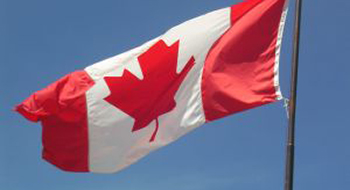

Ottawa’s proposed pooled registered retirement savings plans (PRPPs) must offer the same low annual management fees as employer-sponsored pension plans—otherwise they’re not a good deal for Canadians. So argue critics of the PRPP model quoted in this article by Jonathan Chevreau a week ago.
Since economies of scale mean pension plan members pay much lower fees than mutual fund investors, a PRPP should offer the same cost advantage to make them a truly viable alternative to DB and DC plans.
Could passive options like ETFs help? Mark Yamada, president of PUR Investing Inc., says they just might—but that depends on whether or not Ottawa is willing to go to bat for the little guy. I interviewed Yamada on Friday about the role ETFs could have in the new PRPPs.
It’s been suggested that ETFs be made available to Canadians through PRPPs – how likely do you think this is to happen in your view – why/why not?
Making ETFs available for use in PRPPs would give investors a low cost alternative to mutual and pooled funds. Although high costs have been identified as an impediment to adequate retirement savings, sadly it is not in the best interests of most banks, insurance and fund companies to make ETFs more accessible. Mutual fund distribution systems can’t sell ETFs – they are securities requiring upgraded registration. Will Ottawa go to bat for the “little guy” or for the financial services industry? Hopefully legislation will benefit the individual.
How could ETFs benefit Canadians participating in PRPPs?
ETFs are low cost diversified portfolio building blocks that are transparent and trade throughout the day vs. mutual funds that are generally much more expensive, won’t tell you what assets they hold for three or six months and are priced once a day regardless of how volatile a market may be. Lowering costs is the most effective way of boosting returns.
Right now, the traditional DC model is based on mutual funds. Would the addition of ETFs present any new risks for PRPP participants? How could they be dealt with?
DC and RRSP investors notoriously suffer from inertia. Everyday life offers distractions with higher priorities and more fun than making asset allocation decisions. Some like doing this, but not enough to stem the tide of a pension shortfall. This failure is the legacy of a system based on mutual funds. Introducing ETFs could not make this worse. Even if the inadequate tools offered by the industry today remain unchanged, investors saving 1%-2%/annum in fees with ETFs could gain over ten years of retirement spending using modest assumptions for a 40 year old.
Most ETFs must be purchased on a stock exchange, thus incurring a trading cost. Acquiring ETFs directly from the sponsor is possible today others can follow. Inexpensive discount brokers can reduce costs and online tools can help in selection and portfolio construction. Derivative and credit risk are involved with some ETFs but transparency allows them to be spotted easily.
